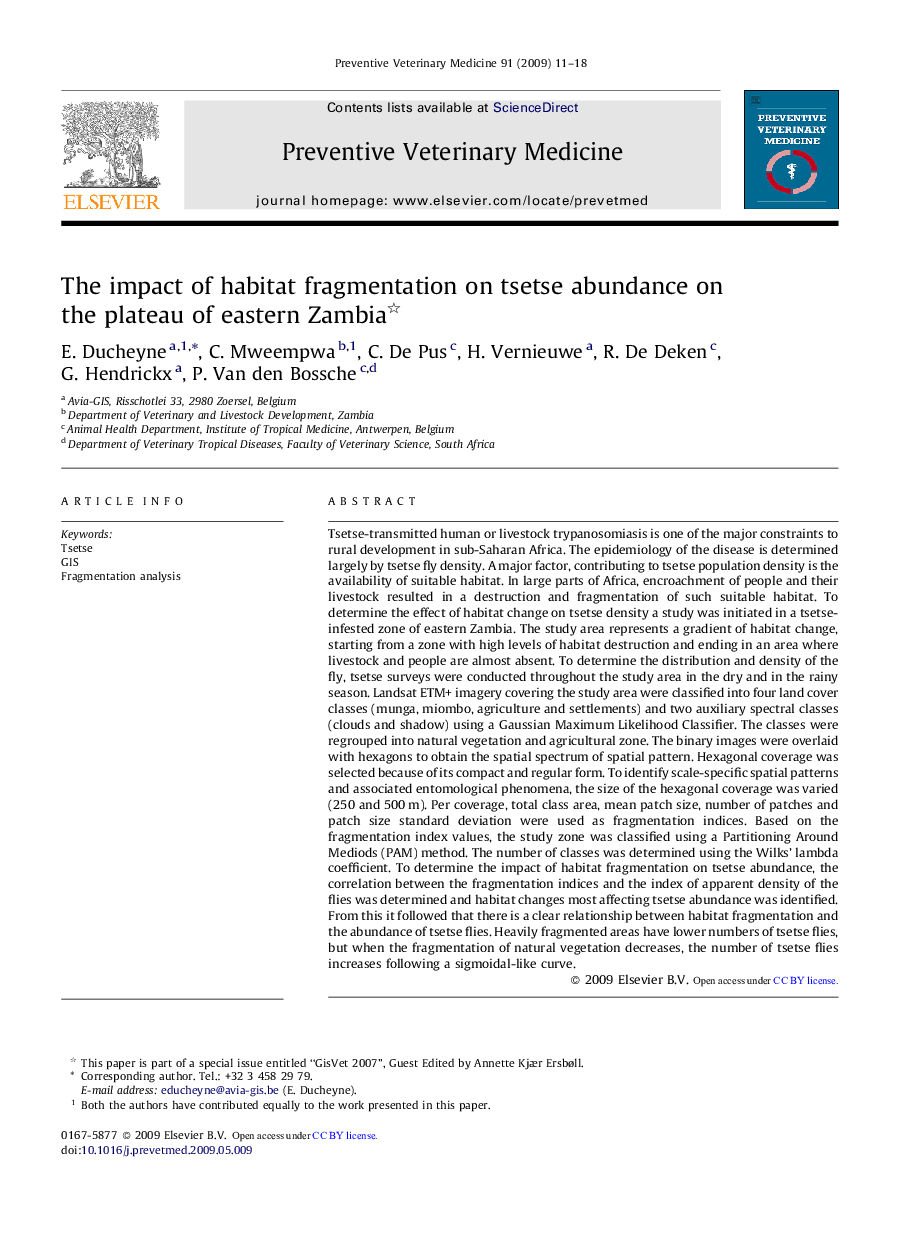| کد مقاله | کد نشریه | سال انتشار | مقاله انگلیسی | نسخه تمام متن |
|---|---|---|---|---|
| 5794241 | 1110079 | 2009 | 8 صفحه PDF | دانلود رایگان |

Tsetse-transmitted human or livestock trypanosomiasis is one of the major constraints to rural development in sub-Saharan Africa. The epidemiology of the disease is determined largely by tsetse fly density. A major factor, contributing to tsetse population density is the availability of suitable habitat. In large parts of Africa, encroachment of people and their livestock resulted in a destruction and fragmentation of such suitable habitat. To determine the effect of habitat change on tsetse density a study was initiated in a tsetse-infested zone of eastern Zambia. The study area represents a gradient of habitat change, starting from a zone with high levels of habitat destruction and ending in an area where livestock and people are almost absent. To determine the distribution and density of the fly, tsetse surveys were conducted throughout the study area in the dry and in the rainy season. Landsat ETM+ imagery covering the study area were classified into four land cover classes (munga, miombo, agriculture and settlements) and two auxiliary spectral classes (clouds and shadow) using a Gaussian Maximum Likelihood Classifier. The classes were regrouped into natural vegetation and agricultural zone. The binary images were overlaid with hexagons to obtain the spatial spectrum of spatial pattern. Hexagonal coverage was selected because of its compact and regular form. To identify scale-specific spatial patterns and associated entomological phenomena, the size of the hexagonal coverage was varied (250 and 500Â m). Per coverage, total class area, mean patch size, number of patches and patch size standard deviation were used as fragmentation indices. Based on the fragmentation index values, the study zone was classified using a Partitioning Around Mediods (PAM) method. The number of classes was determined using the Wilks' lambda coefficient. To determine the impact of habitat fragmentation on tsetse abundance, the correlation between the fragmentation indices and the index of apparent density of the flies was determined and habitat changes most affecting tsetse abundance was identified. From this it followed that there is a clear relationship between habitat fragmentation and the abundance of tsetse flies. Heavily fragmented areas have lower numbers of tsetse flies, but when the fragmentation of natural vegetation decreases, the number of tsetse flies increases following a sigmoidal-like curve.
Journal: Preventive Veterinary Medicine - Volume 91, Issue 1, 1 September 2009, Pages 11-18